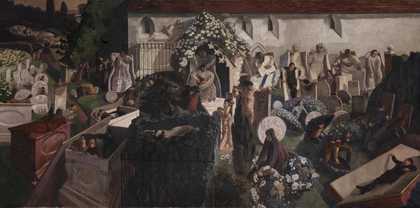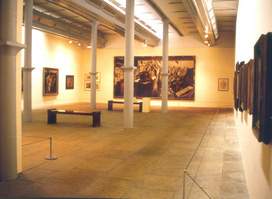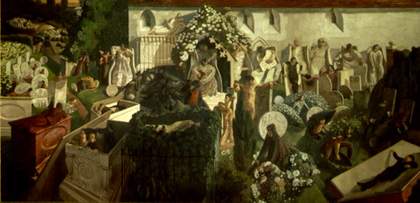
Sir Stanley Spencer
The Resurrection, Cookham (1924–7)
Tate
As in all his Resurrection paintings, Spencer uses greys, lavenders and pale greens to suggest a translucent silvery world lit by a more intense version of moonlight. Under this ambigious light figures emerge from their graves, seemingly awakening from a collective dream and unaware they have returned to exactly the world that the left in death. Perhaps in Spencer’s terms they are spared the horror of this confrontation with perpetual recurrence by the amnesia of their resurrected innocence.
The composition came out of an idea for something to be seen from below, and for a long time Tate re-created this spatial encounter by hanging it over the stairs that led down to the restaurant and toilets – the resurrection suspended over the descent into the underworld of animal appetites and waste. This may have marginalised the work, but for me it was an awakening to the painting. I suddenly saw it as a juxtaposition between the under and overworlds, and one that seemed perfectly in keeping with Spencer’s desire to mingle the sacred and the profane.
While the artist maintained this was an image of bliss, for everyone else it seems it has always been a scene of extreme disquiet, bordering on horror. For me, Spencer is not a religious painter, but a painter of the uncanniness of Christian doctrine imagined in contemporary pictorial terms. He is a translator of the dreams induced through a religious upbringing, rather than a visionary. Instead of being a painter of the sacred, I see him as a social artist painting from within a community’s sense of itself – from within the fold. The central image of his œuvre has always been the crowd in a process of metamorphosis – dying, resurrecting, healing and mending; the crowd tending to itself. I think it is this spirit of redemption in Spencer’s art that has been so important in the development of my own work.


